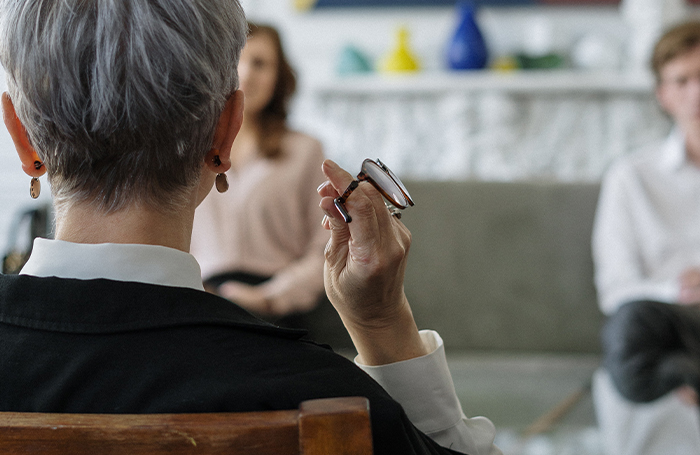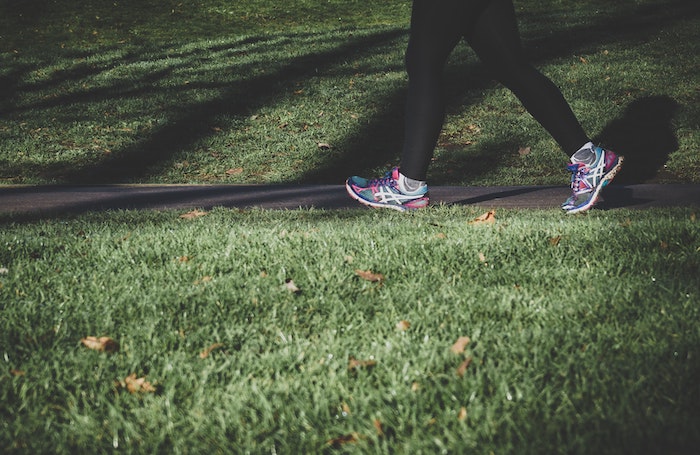Architects are still living with the legacies of the pandemic. For some, it might be the challenges of hybrid or remote working or a lingering sense of loss of control brought on by lockdown. For others, it may be the challenge of returning to the office after isolation – all against a background of soaring living costs and a looming recession.
Katie Buckingham, founder, and director of mental health at work training company Altruist Enterprises, says it could be a good time for stressed architects to look at the well-regarded '5 Ways to Wellbeing' program, especially when it comes to preparing for 2023 and the challenges it may provide.
This personal wellbeing plan, first set out by the New Economics Foundation following its own evidence-based research, can be readily accessed from a variety of sources.

Mental health checklist for architects
Connect
Surveys on remote working have shown that people are evenly split between those who benefitted from working from home and those who have struggled with isolation. But connecting face-to-face with people is regarded as important for wellbeing wherever you stand on the issue.
Connecting with other people builds personal relationships and offers opportunities to share positive experiences. Katie says there is a distinction between connecting and simply making contact: “An easy way to think about it is not just speaking to someone, but having a conversation.”
From a work perspective, this could be as simple as going for a coffee with a colleague, talking with them not at your desk but in a different, non-work setting, and getting to know something new about them – essentially, talking about things other than work.
Be active
It is well known that physical activity causes chemical changes in the brain that can improve mood. Just 20 minutes or more of activity that increases heart rate can release feel good endorphins.
“Being active does not have to mean a 5k run or visit to the gym, it is about finding things that work for you. Look for opportunities that are easy. It could be getting off one stop early on the way to work and walking, or taking a walk at lunchtime,” Katie advises.
Exercise tends to change your perspective on things, and afterward, you may find you are not dwelling on the negatives of your situation, but seeing things in a more positive light.

Take notice
This is about paying attention to the present moment, focusing on the ‘now’. It is what has become known as ‘mindfulness’. If you can become fully focused on the now, at the very least it means that at that moment you are not worrying about the past or the future.
“It is not about crossed-legged meditation, it is about being aware of your sensations, of noticing and seeing different things, perhaps when you are going for a walk," says Katie.
Stopping to think about the positives makes you feel better about yourself. Some people take this a step further by actively practicing ‘gratitude’ – totting up the positives they are aware of in the present. Some find it helpful to keep gratitude journals, mentally or otherwise.
Learn
Research shows that learning, in its broadest sense, can improve wellbeing and raise self-esteem. Learning activities may also positively overlap with other steps toward wellbeing, such as connecting with other people.
Learning does not need to revolve around a course or a set objective like learning a new language. Simple, everyday activities can be approached as learning, such as watching a documentary or listening to music and reading about the artist.
The learning attitude allows people to switch off from their usual concerns, says Katie. Though for the purposes of pursuing wellbeing, she suggests choosing a topic or subject that is not directly work related.
Give
Those that help others tend to be happier in themselves, Katie continues. Again, as with learning, this does not have to be a specific activity such as volunteering or giving to charity, it can be as simple as giving someone time, or smiling and saying hello to a stranger. Small acts of kindness without the expectation of any reward make connections with others and create positive feelings. Such acts also generate a sense of reward, which of course is a reward in itself.
At the individual level, Katie says these five guiding principles can work as a checklist that can usefully be revisited from time to time, helping people to maintain their own personal wellbeing program.
At the practice level, there are now accredited CPD courses available on mental health at work and personal resilience in the workplace that are likely to appeal to all staff members.
Katie believes that every practice, regardless of size, should have a wellbeing strategy and associated policies in place, particularly if they are businesses that want to grow in the future. Altruist Enterprises has a free: Guide to Developing an Effective Mental Well-being Strategy.
For small practices with limited budgets, Katie recommends the training-up of two mental health first aiders, who will be available to staff as first points of contact and reassurance.
The rule-of-thumb for an organisation is one mental health first aider for every 25 staff, but two is regarded as the minimum regardless of size, always allowing for one to be unavailable or to step back if they are not in the right place at that particular time to give the time and support that is needed.
Thanks to Katie Buckingham, Director, Altruist Enterprises.
Text by Neal Morris. This is a Professional Feature edited by the RIBA Practice team. Send us your feedback and ideas.
RIBA Core Curriculum topic: Health, safety and wellbeing.
As part of the flexible RIBA CPD programme, professional features count as microlearning. See further information on the updated RIBA CPD core curriculum and on fulfilling your CPD requirements as a RIBA Chartered Member.









